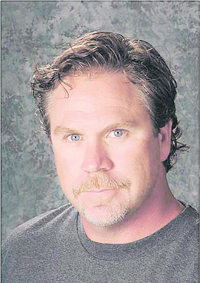| | Published September 3, 2008
| Eating Disorders in Boys
| | By Dr. Harold Jules Hoyle Ph.D. | | |
Dear Dr. Harold,
I think my son may have an eating disorder. I know this doesn't just happen to girls, but what should I do?
You are correct eating disorders impact young men as well. Although the numbers are still 9 to 1- women to men in eating disorders, the numbers for males have been increasing. So here is a crash course in male eating disorders and where you might want to start in order to get help. Eating disorders for boys and girls start at the same place, with a mismatch between what the child or adolescent sees for themselves and the bodies that they have. If we get our ideas of what we should look like from the media, the rough journey begins as early for boys as it does for girls who look at their Barbie. Since his inception, the relative size of GI Joe's biceps have grown from 12 to 16 1/2 inches, while his waist has reduced 3 inches and he has added the popular 6 pack abs. These measurements are unreachable for most young men without the use of anabolic steroids. Once a child has a mismatch, surveys of boys with eating disorders indicate that young men suffer from isolation, thinking they are the only ones. People just don't think it happens to boys so they often suffer in silence.
In addition to anorexia nervosa, and bulimia nervosa, young men suffer from what is sometimes called bigorexia, or reverse anorexia. In this disorder, the young man works out and eats in order to change his body to some ideal, from GI Joe to their favorite fantasy player, even though that ideal body might not exist. The psychological toll of this type of eating disorder is similar to anorexia and bulimia; anxiety, depression, perfectionism, and body dissatisfaction. So what steps do you take?
Number One. Reach out to the resources that are already part of your life. Contact your child's school and talk with the school psychologist, or school counselor. Set up an appointment with your child's pediatrician. Medical doctors are often an excellent place to start when you have concerns about any of your child's behaviors. Talk to your child about your concerns. Kids are often a lot more straight forward than we expect.
Number Two. Know your kid and promote a realistic self-image. Know your kid's eating patterns. Notice changes in attitude as well as behavior. Knowing your child's behaviors and attitudes can be important information that can make a real difference in how treatment goes. Take an inventory about how food and body image are treated in your social group. This is also useful information for helping professionals.
Number Three. Contact an expert in the field. Very often you can get referrals from the people above, but here are some rules for finding people who can help. When looking for someone, ask about their training, experience, and certifications. Many of the programs for eating disorders deal primarily with young women or adults. Make sure the person or program you are going to is trained and has experience with people like your child. Many disorders have organizations that attempt to control the field by creating a certification process. The certification for working with people who have eating disorders called a Certified Eating Disorders Specialist (CEDS). At the very least, these types of certification programs ensure that the professional has done their homework and is committed to the field. |
 | |
 | | Harold is a licensed clinical psychologist and a lecturer and in the School of Counseling Psychology, Education, and Pastoral Ministries Santa Clara University. With his wife and two children, he is a 13 year long resident of the Lamorinda area. He is a sought after speaker in the areas of parenting, education, and behavior with adolescents and children. He has a local private practice specializing in assessment and therapy. He can be contacted by phone or email: 510-219-8660 or hjhoyle@mac.com | | |
